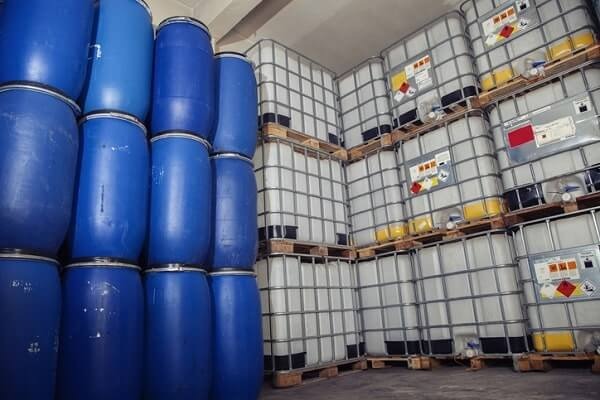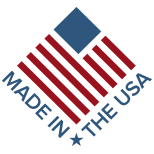Call Us: 1.800.275.3453
Request a QuoteCall Us: 1.800.275.3453
Request a Quote
In today’s fast-paced manufacturing world, the importance of spill prevention in the workplace cannot be overstated. Whether you’re grappling with the intricacies of chemical spills or striving to prevent spillage of any kind, the stakes are high. Understanding and implementing effective spillage containment strategies is not just a regulatory necessity; it’s a fundamental aspect of operational excellence. This comprehensive guide will explore actionable measures and best practices for spill prevention in the workplace to ensure your workplace stays ahead of spill-related challenges. From mastering the nuances of chemical spill prevention to the essentials of cleaning up spills in the workplace, our insights are tailored to the modern manufacturing environment. Join us as we delve into the key strategies for maintaining a safer, more productive and regulation-compliant workplace.
In this Article:
Spill prevention in the workplace is a systematic approach to managing and mitigating the risks associated with spills, particularly chemical spills, in a manufacturing or industrial setting. It involves a set of practices designed to prevent spillage of hazardous materials, ensuring a safer work environment and compliance with regulatory standards. This approach encompasses various elements, from establishing strict handling procedures for hazardous substances to implementing secondary spillage containment measures. Effective spill-prevention strategies are integral to maintaining operational continuity, protecting employees and preserving the environment. By prioritizing spill prevention in the workplace, businesses can significantly reduce the likelihood of accidents and the associated costs of cleaning up spills in the workplace and downtime.
For effective spill prevention in the workplace, here are some valuable tips to consider:
Incorporating these practices can significantly reduce the likelihood of spills and make cleaning up spills in the workplace easier if they do happen, enhancing safety and compliance in the workplace.

Spill prevention is vital to maintaining a safe, efficient and compliant workplace. It requires a thorough understanding of the risks associated with chemical spills in the workplace and a proactive approach to prevent spillage. In manufacturing settings, where chemical spills can have severe consequences, it’s crucial to adopt proactive spillage containment measures. These include:
By prioritizing these practices, businesses can enhance safety, reduce downtime and maintain compliance with regulatory standards.
Navigating the complex landscape of regulations and compliance is essential for managing chemical spills in the workplace. Adhering to standards such as the U.S Environmental Protection Agency’s (EPA) Spill Prevention, Control and Countermeasure (SPCC) rule and OSHA’s Hazard Communication Standard ensures that businesses establish proper plans. These regulations require companies to have adequate secondary containment solutions, employee training programs and clear communication strategies to handle potential hazardous or chemical spills in the workplace effectively. Staying compliant not only safeguards the environment and employee health but also shields businesses from legal penalties and fines. It’s crucial for facilities to regularly review and update their spill prevention plans to align with current requirements and industry best practices.
Spill prevention in the workplace is not just about ensuring safety; it’s also crucial for maintaining compliance and avoiding regulatory fines. To effectively prevent spillage, businesses must adopt comprehensive measures that include:
By focusing on these key areas, organizations can not only prevent spillage but also stay aligned with industry regulations, thereby avoiding costly fines and enhancing their reputation for safety and responsibility. Certain chemical spills in the workplace may need to be reported to the EPA if the spill exceeds the Reportable Quantity of that material.
When you are trying to decide how to prevent spillage, you need to consider the type of material, the location and the potential risks to the surrounding area and people. There are many ways to address spill prevention in the workplace, each tailored to specific industry or product needs and scenarios.
Poly Dike MPE® walls are ideal for enclosing areas around storage tanks and hazardous material workstations. They provide robust spill prevention and are customizable in height and layout. This product is a durable, non-corrosive and modular solution suitable for chemical storage tanks and process treatment sites.
Camel Tri-Star® MAX Modular Drive Over Spill Containment Berms are designed for spill prevention for heavy-duty applications, particularly in areas with vehicle traffic. They are built to withstand the weight and movement of vehicles, making them suitable for military and industrial settings.
The Camel Tri-Star® OPS offers flexibility for various job sites, especially where spillage containment requirements change. These are suitable for semi-permanent applications and can be relocated as a single unit.
The Star Track® system is specifically designed for railcar transfer operations to prevent leaks and incidental spills. These pans are used in several industries to keep products from spilling or leaking onto the ground and are constructed from high-strength, corrosion-resistant materials.
Spillage containment pads are specialized solutions designed to address the issue of chemical spills in the workplace, playing a crucial role in chemical spill prevention. These pads provide a versatile and effective way to contain spills, ensuring a clean and safe work environment. Polystar Containment features three distinct types of pads:
Each spillage containment pad type is engineered with specific features to address the nuances of different spill scenarios.
Polystar Containment specializes in designing custom secondary spillage containment systems for spill prevention in the workplace. We know how to prevent spillage and help you clean up spills in the workplace. Our solutions are thoughfully engineered to meet the unique demands of various industries, ensuring compliance with regulatory standards. Whether it’s adapting to specific site conditions or managing multiple types of hazardous materials, our custom spill prevention and containment products are crafted with precision for superior performance. We work closely with clients, understanding their specific needs for spill prevention and cleaning up spills in the workplace to provide spillage containment solutions that enhance safety and ensure compliance in their operations. With Polystar, you can trust that your workplace is equipped with the most reliable and tailored spill prevention systems available.
Here are answers to some of our most common questions about spill prevention and avoiding cleaning up spills in the workplace.
If you encounter an unknown chemical spill in the workplace, evacuate employees from the area to avoid harmful exposure and initiate spillage containment procedures immediately. Utilize spill berms or other spill prevention tools to control the spread of the substance. It’s critical to consult the Emergency Response Plan for guidance on how to prevent spillage and manage the situation safely. Until the chemical’s identity is confirmed, treat it as highly hazardous and follow strict chemical spill prevention protocols to ensure the safety of the workplace and employees.
Even if you know how to prevent spillage, unavoidable accidents happen. Efficient spillage containment helps maintain operational continuity, preventing costly downtime and preserving workplace safety. If an accident happens, cleaning up spills without delay is crucial, especially with chemical spills in the workplace. Immediate action reduces the risk of slip hazards and exposure to potentially dangerous chemicals, embodying the principles of chemical spill prevention. Quick response is not only a safety measure but also a compliance matter, as it aligns with regulations on spill prevention in the workplace.
The “4 Cs” of spill response are a set of recognized best practices for managing and cleaning up spills in the workplace. They represent a structured approach to quickly and effectively address spills, aiming to minimize environmental impact, human health risks and property damage. This method ensures proper containment to prevent spillage spread, control measures to stop further release, thorough cleanup to remove contaminants and clear communication with relevant parties for a coordinated response. These steps are crucial for maintaining safety and regulatory compliance during spill incidents.
These steps are foundational for ensuring a safe and compliant response to chemical spills in the workplace, minimizing potential harm to employees and the environment.
Step up your game in spill prevention with Polystar’s comprehensive containment solutions, designed to address a variety of spillage containment challenges in the workplace. Whether it’s preventing spillage or managing chemical spills, Polystar has you covered. Our products are tailored to meet the dynamic needs of spill prevention in the workplace, ensuring your facility not only complies with regulations but also sets a benchmark in safety and efficiency. With Polystar, spill prevention is more than a protocol; it’s a commitment to excellence. Request a quote
